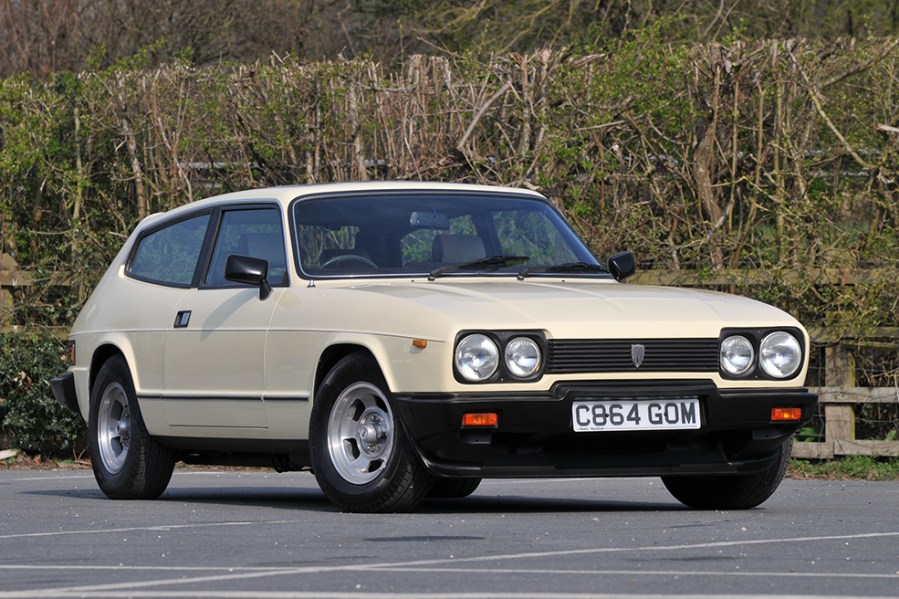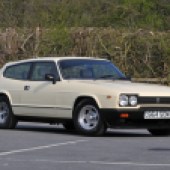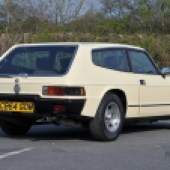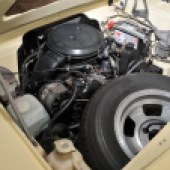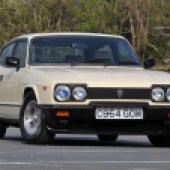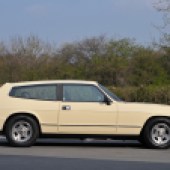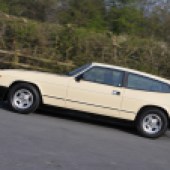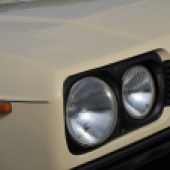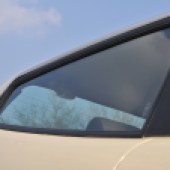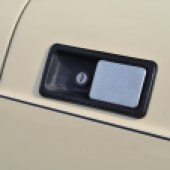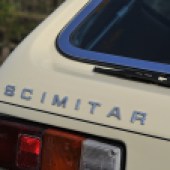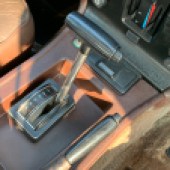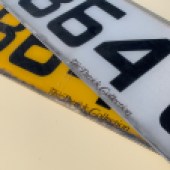The quirky shooting brake with pub-fact royal connections, the Reliant Scimitar GTE remains a leftfield yet interesting classic. We get behind the wheel of the last pre-Middlebridge car
With the benefit of hindsight, if you had to come up with the recipe for the perfect classic performance car, it might well include a rust-proof bodyshell, a gutsy engine plucked from a major manufacturer, rear-wheel drive naturally and space for family members both two and four-legged. A recipe which in fact sounds a lot like the Reliant Scimitar GTE.
In many ways the Scimitar is the perfect illustration of the ingenuity of the British motor industry during the 60s and 70s, with the concept of the ‘lifestyle estate’ pioneered by the little Tamworth firm going on to be a popular niche for volume makers and emulated by everyone from Volvo to Lancia. The car would famously be popular even with the royal family, which is a curious twist to the association of the Reliant brand with budget three-wheelers.
It’s the GTE which tends to be associated with the Scimitar badge, but the car began life as a very different animal in 1965, using a modified version of the chassis from Reliant’s previous Sabre model and a body style derived from a concept produced by Ogle Design for the Daimler SP250 ‘Dart’ chassis.
Known as the SE4 and badged Scimitar GT, this was a neat coupé powered by the 2.5-litre Ford straight-six engine and was a well regarded performance car.
With the relationship between Ogle and Reliant now cemented, the following year the firm provided Ogle with a Scimitar chassis as the base for a design it had been commissioned to produce for the automotive glazing firm Triplex.
By then Ogle Design had recruited rising design star Tom Karen – whose later credits would include the Raleigh Chopper and Bond Bug – who was responsible for styling the Triplex concept. Named the GTS, for Glazing Test Special, it was styled to showcase Triplex’s ability to produce large, complex laminated glass panels and Karen used an estate car style to achieve this, employing two large curved rear side windows and a glazed roof made from Triplex Sundym glass.
Liking what they saw and wanting to update the Scimitar, Reliant management commissioned Ogle and Karen to revise the Triplex GTS into a production design and with a redesigned chassis to give more rear footwell space, the result was the car badged as the Reliant Scimitar GTE and known as the SE5.
The Scimitar had gained the 3-litre Ford Essex V6 in 1966 when the straight-six engine had been discontinued and this had given it respectable performance with a 120 mph top speed and 0-60 mph in 9.4 seconds. The combination of the muscular Ford V6, Tom Karen’s neat styling and the estate car practicality made the car unique on the market, with the Volvo and BMW competitors offering only four-cylinder power.
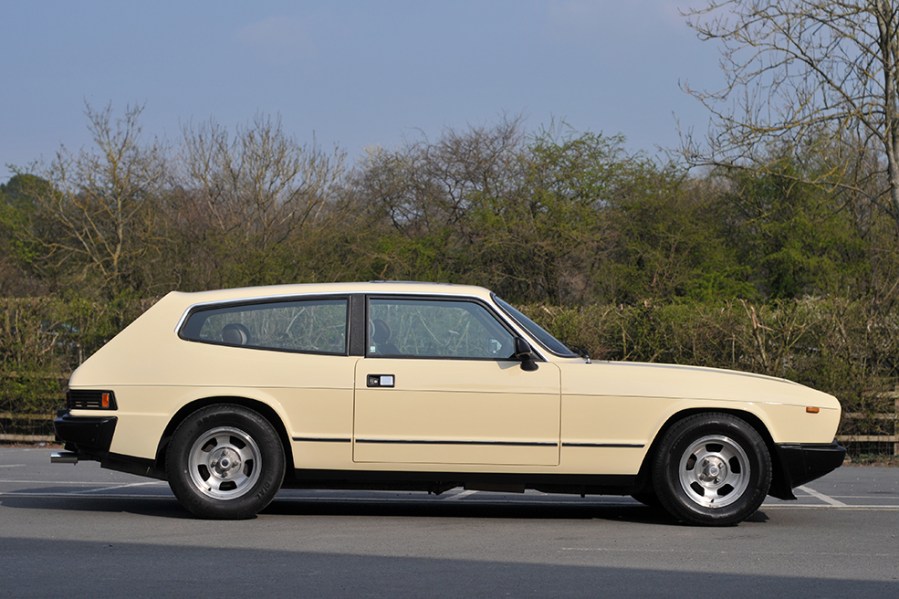
In 1972, the Reliant Scimitar GTE received a revised chassis, upgraded interior and restyled rear lights, in which form it was known as the SE5a. Further changes came in 1975 when the design was revised to make the driving experience less overtly sporting and lend it more mainstream appeal. The fibreglass bodyshell was made longer and wider, while modern (this was the 70s remember) rubber bumpers were fitted and the suspension became softer. Only 550 cars were produced in this SE6 form before further changes to spring rates, braking and steering were made and the model was given the name SE6a.
The SE6a would live on until 1979 when the 3-litre Essex engine was discontinued by Ford and Reliant turned instead to the 2.8-litre ‘Cologne’ V6 good for 140 bhp. Interior revisions and chassis strengthening modifications were added at the same time to create the SE6b and the car would continue in this form until November 1986 when production ceased.
The rights to the design would later be bought by Anglophile Japanese businessman Kohji Nakauchi who restarted production under the Middlebridge name after allegedly making 450 improvements to the original design and generally taking the car more upmarket. With the injected 2.9-litre Ford Cologne V6, the cars were priced to compete with the Audi Avant, Mercedes estates and the BMW 325i Touring, but the firm collapsed in 1990 in rather bizarre circumstances following a lawsuit over a vintage Bentley.
The Middlebridge cars have their own following, but the story of the original Reliant Scimitar GTE ended with the last one to leave the Tamworth line, which we’re told is this very example. Registered in May 1986 and formerly a resident of the Patrick Collection, it’s the ultimate incarnation of the Reliant-built car and as such makes a fascinating prospect for a road test.
Before even firing up the gruff Ford V6, the first thing that strikes me about the Reliant is the unexpectedly high quality of construction. Compared even to a Lotus of the period, the Scimitar’s bodywork mouldings are clean and crisp, ripple-free and without the awkward rubber moulding which disguises the join between the two halves of the mould on a contemporary Lotus.
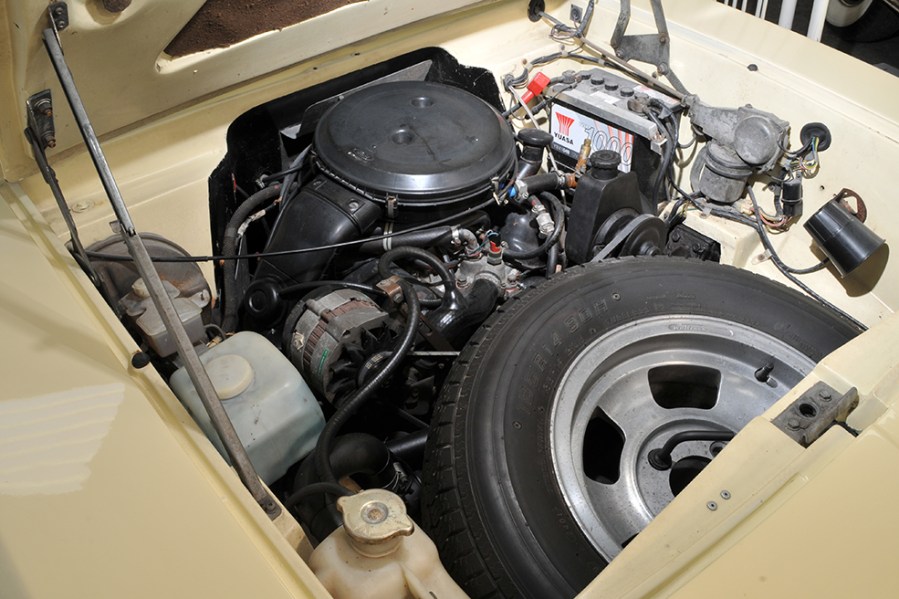
Opening the door – while trying to overlook the Marina handle, naturally – reveals that the opening panels manage to avoid the clumsy construction of many fibreglass shells which so often need thick returns on panel edges and corners. Indeed, if you didn’t know the car was fibreglass you wouldn’t necessarily realise until you thought about it.
It’s no surprise to find that this Reliant Scimitar GTE is automatic – indeed, I think almost all Scimitars I’ve ever sampled have been self-shifters. Carbs, cold engines and auto boxes don’t always work well together but after a few seconds it’s happy to shift into gear without danger of stalling and with some warmth into the Ford motor the car feels as lively as it looks.
The Scimitar is brisk rather than fast but it’s certainly quick enough to be fun and more than happy to hold its own in modern traffic. From the driver’s seat the car feels more compact than you might expect – the rear seat is easily reached from the front for example – but in other respects it has a modern feel with good visibility from the large glass area.
It’s also a civilised way to travel, with a relatively soft suspension set-up and tall tyre profile giving a comfortable ride – helped, of course by the coil-sprung independent rear suspension set-up which is more sophisticated than many cars with their origins in the Sixties. After just a few miles the Scimitar becomes a familiar companion and its generally benign behaviour means it can be rewarding to hustle.
And you’re traveling in style, too: any car with Wolfrace slot mags (a popular factory option) gets my vote, although the beige exterior wouldn’t have been my choice even in 1986.
The really intriguing prospect though is the ease with which you can get yourself into a GTE: values are as low as £1,000 for runners, with project half that and a respectable car can be yours for as little as £3,000, running up to £8,000 for the best examples. For a car which sets the template for the ideal classic, that’s affordable by any standards.

